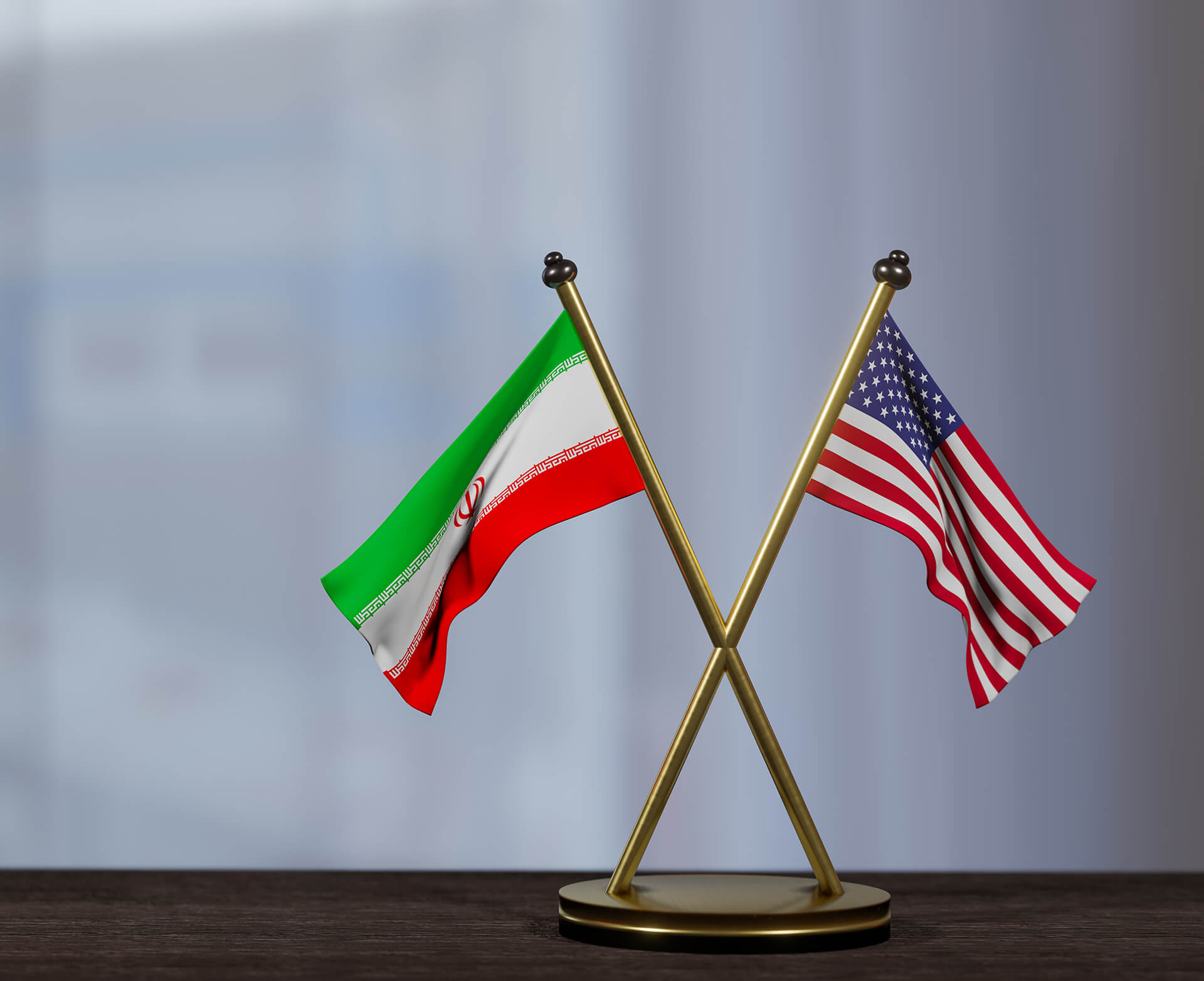Neither side has made an official announcement. There has been no ceremony to commemorate a settlement of issues. Yet, actions by the parties reported by the media suggest that something is up between these long-time enemies, the United States and the Islamic Republic of Iran. Searching for a term to explain what may be happening, some media are suggesting a “non-agreement” between the perpetually adversarial governments.
The two countries, as well as the other members of the P5+1 (the five permanent UN Security Council members, plus Germany), had reached an agreement in 2015 known as the Joint Comprehensive Plan of Action (JCPOA). That agreement called for severe curtailment of Iran’s nuclear weapons program in exchange for gradual suspension of sanctions and the return of billions in funds held in mostly Western financial institutions.
While many in the US hailed the accords as President Barack Obama’s signature foreign policy achievement, others — especially Republicans in Congress — characterized it as capitulation and refused to consider it. In 2018, President Donald Trump formally withdrew the US from the agreement, despite Iran’s having largely met all requirements up to that point.
One year later, Iran restarted its centrifuges and stockpiling large amounts of enriched uranium, though stopping short of weapons-grade levels, which would be 90% highly enriched uranium.
No agreement like a non-agreement
During his presidential campaign and once in office, President Joe Biden committed the US to either reentering the JCPOA or negotiating an alternative that would halt Iran’s march to production of nuclear weapons. While slow off the mark, the negotiations did start, albeit indirectly as Iran refused to meet face-to-face with its American counterparts. However, those talks broke down in August of last year, and the JCPOA was seemingly consigned to the shelf, if not the morgue.
Despite even the president’s own death pronouncement of the JCPOA as recently as last December, there was still some apparent life in the negotiations. Facilitated by Oman, Qatar and Switzerland, talks continued between the two sides starting earlier this year for several months as Biden seems determined to curtail the Iran nuclear program. Then, earlier this month, Secretary of State Antony Blinken announced the impending release of five US citizens from Iranian prison (they have not yet been allowed to leave Iran). Not long afterwards, the Wall Street Journal reported that Iran was limiting its production of HEU to no more than 60%.
In exchange for the prisoner release, the US has agreed to the gradual release of $6 billion in Iranian funds held under US sanctions in South Korean banks. It has also allowed Iraq to pay back $10 billion in debts owed to Iran for electrical power purchases. Perhaps more importantly, Iranian oil exports have begun to creep back up after years of crushing sanctions on such exports. Sanctions, however, have not been lifted.
Why no actual agreement?
There may be more to all of this, but there’s no way of knowing for sure. There is no formal agreement, and for good reason. Congressional Republicans, who control the House of Representatives, have made it clear that they want still more aggressive action against Iran, not a deal.
Moreover, the US presidential election campaign has begun. When Obama made his 2015 deal, he was not up for reelection; Biden is. Biden will not jeopardize his chances in the 2024 election, in which he’s likely to face the man who canceled the last agreement, Donald Trump. Introducing the hot-button Iran issue, on which there appears to be no middle ground, would surely distract voters from Biden’s campaign messaging.
On the other hand, there is the promise he made in his 2020 campaign of restarting the JCPOA, one which has encountered repeated frustrations, most (but not all) of Iran’s doing. The non-agreement format would seem to allow him to have it both ways: no official agreement with Iran, but seeming success in curtailing its weapons production program.
For those unfamiliar with the obscure ways of diplomacy, this might all seem like hookah smoke and mirrors. With no officially approved written agreement signed by both sides, how can there be an agreement? How is it enforced and how can each side be held accountable? And how can anyone not involved in the negotiations know what was actually agreed? That uncertainty, doubt, haziness and mysteriousness are probably just what both parties wanted.
Biden can publicly assert, as members of his administration already have, that there is no agreement. But he can also take credit for having fulfilled (at least so far) his pledge of the 2020 campaign on Iran’s nuclear program. Call it deniability without liability.
The Iranians have their reasons as well. Extremists in an already very conservative government, most especially among the powerful Islamic Revolutionary Guard Corps, have been largely opposed to any agreement with their sworn enemy, the US. They miss no opportunity to claim that the US cannot be trusted after having already abrogated the 2015 agreement in 2018. And there is little doubt that they would like to elevate the country to nuclear weapons status.
But the Iranian economy is in deep trouble. Inflation is running around the 40–50% zone and unemployment hovers around 8%, though many suspect it is actually higher, with youth employment over 25%. The latter statistic is especially important, given the widespread demonstrations that followed the murder while in official custody of Mahsa Amini for allegedly failing to abide by Iran’s strict dress code for women to cover their hair. With the first anniversary of her death approaching, Iran is anxious to proffer any economic relief it can to the Iranian people.
An agreement by any other name…
So, for the Americans and Iranians alike, there is no agreement, but each side is apparently taking the very actions that would have been included in one. It’s a “non-agreement.”
Diplomats have long used the device of a “non-paper” to communicate unofficially, in writing, their government’s position on any number of issues to another government. It clarifies a position or expectations without necessarily formally committing. It is understood that such a document is for the internal working use of the receiving government, which might in turn respond with its own non-paper. Usually, the objective is getting to a point at which something more official and formal may be exchanged.
It would appear the Americans and Iranians have employed the same concept for their non-agreement. Presumably, either side may walk away at any point that it perceives the other as not complying, or it has everything it wants.
Can all of this take on something perhaps of greater consequence? That would not be a good bet, given the decades of bad blood between the two. Hatred is not too strong a word to describe the feelings of many on both sides toward one another. But one could see a second-term Joe Biden pursuing something more official and long-term. Moreover, there could be — though it’s hardly likely — a more amenable leadership in Iran, making agreement somewhat more possible.
And the Iranians, too, might hold out hope that, if the non-agreement holds and Biden returns to the White House in January 2025, something more permanent might be in the offing. All of that is aspirational in the extreme. Barring monumental changes in circumstances, especially in the leadership of the Islamic Republic, settling on anything more permanent and formal does not seem to be in the cards for the foreseeable future.
If there is any hope, it may be in the actions of other countries in the Middle East, particularly the Gulf states, which all want to lower the temperature in the region. The slow rapprochement between Saudi Arabia and Iran and the improved relations between the UAE and Iran all suggest the countries of the Gulf want to move in that direction. Israel will not publicly endorse and may even criticize a non-agreement, but the US administration has surely shared its details with the Israeli leadership. They too want to see Iran’s nuclear activities at least curtailed, if not eliminated. So, success of the non-agreement in the months ahead will give it more staying power over a longer period of time.
Lastly, tensions throughout the world are not propitious for whatever understanding may now be in place between Tehran and Washington. Iran’s movement into the orbit of the China–Russia alliance will only exacerbate tensions between Iran and the West. Iran’s destabilizing activities elsewhere in the Middle East and its overt support for Russia (e.g., supplying Russia with Iranian drones) in the latter’s brutal and unjustified war against Ukraine have increased American and Western enmity toward Iran. And Iran’s ongoing crackdown on regime opponents, including doubling down on the outrageous hijab law, further poisons prospects for improved Western–Iranian ties.
Iran’s status as a pariah seems unalterable. Therefore, it would be virtually impossible that a US administration could seriously negotiate something more permanent and official with the Islamic Republic.
The world will have to content itself with the uncertainty and mystery of a continuing “non” relationship … and the fear of another potentially nuclear-armed state. Like any understanding, agreement or treaty, it’s only as good as the intention, will and good faith of the parties.
[Anton Schauble edited this piece.]
The views expressed in this article are the author’s own and do not necessarily reflect Fair Observer’s editorial policy.
Support Fair Observer
We rely on your support for our independence, diversity and quality.
For more than 10 years, Fair Observer has been free, fair and independent. No billionaire owns us, no advertisers control us. We are a reader-supported nonprofit. Unlike many other publications, we keep our content free for readers regardless of where they live or whether they can afford to pay. We have no paywalls and no ads.
In the post-truth era of fake news, echo chambers and filter bubbles, we publish a plurality of perspectives from around the world. Anyone can publish with us, but everyone goes through a rigorous editorial process. So, you get fact-checked, well-reasoned content instead of noise.
We publish 2,500+ voices from 90+ countries. We also conduct education and training programs
on subjects ranging from digital media and journalism to writing and critical thinking. This
doesn’t come cheap. Servers, editors, trainers and web developers cost
money.
Please consider supporting us on a regular basis as a recurring donor or a
sustaining member.
Will you support FO’s journalism?
We rely on your support for our independence, diversity and quality.







Comment